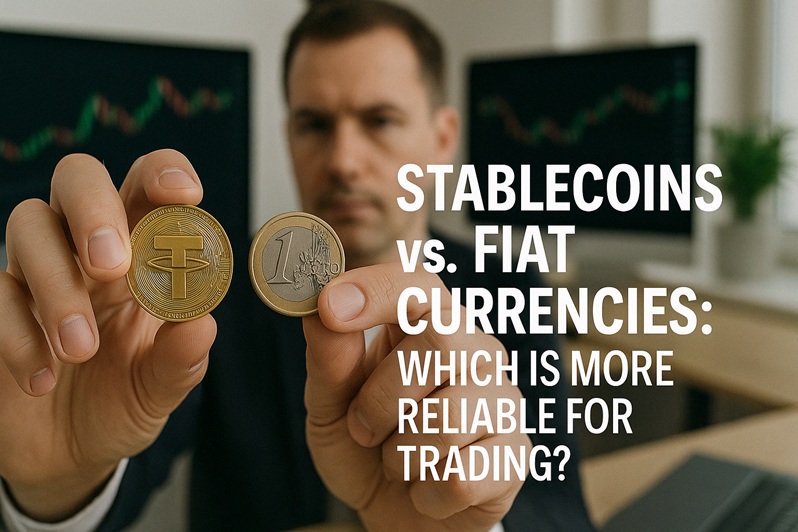
As digital assets continue to disrupt traditional finance, traders are now comparing stablecoins and fiat currencies more closely than ever. While both serve as mediums of exchange, their underlying structures, volatility profiles, and use cases vary significantly. Understanding which is more reliable for trading involves examining their performance across different market environments and trading needs.
Understanding Stability in Different Market Conditions
Fiat currencies like the US Dollar or Euro are backed by governments and central banks. They have decades of historical data, regulatory support, and institutional trust. However, fiat is not immune to macroeconomic forces. Inflation, monetary policy changes, and geopolitical events can cause significant volatility, especially in forex markets.
Stablecoins are engineered for stability, pegged to fiat or commodities like gold, and backed by reserves or algorithms. In theory, they eliminate price swings, making them useful for preserving value. Yet, their reliability hinges on the credibility of their issuer and underlying collateral. Events like regulatory crackdowns or reserve mismanagement can quickly erode trust, as seen in past stablecoin de-peggings.
Accessibility and Utility in Trading Environments
Fiat currencies dominate global financial systems. They are universally accepted, deeply liquid, and supported by robust infrastructure across forex platforms. Most professional traders use fiat as the default base currency, benefiting from established monetary networks and widespread legal recognition.
Stablecoins, while not as widespread, shine in crypto-native ecosystems. They enable seamless transfers between platforms, allow 24/7 access to liquidity, and eliminate the delays associated with traditional banking. For crypto traders, stablecoins often serve as a quick parking option during high volatility. However, their adoption in traditional forex trading remains limited.
Risk, Regulation, and Future Outlook
Fiat currencies operate under regulatory clarity and government oversight, offering traders a predictable environment. Risk management tools, insurance systems, and legal recourse add layers of protection. Stablecoins, in contrast, exist in a regulatory gray zone. While many projects aim for transparency, the lack of consistent global regulation can pose risks, especially during market stress.
As financial markets evolve, hybrid models may emerge. Regulated stablecoins backed by central banks or financial institutions could blend the best of both worlds. For now, the choice between fiat and stablecoins largely depends on trading context—forex versus crypto, short-term speed versus long-term trust.
Conclusion
Stablecoins and fiat currencies each have strengths and weaknesses when it comes to trading. Fiat remains the most reliable in traditional financial markets due to its stability, infrastructure, and regulatory backing. Stablecoins, on the other hand, provide unparalleled utility in digital finance and are gaining ground as a flexible, borderless trading instrument. Traders who understand when and where to use each can optimize reliability and performance in any market environment.
FAQs
What makes stablecoins stable?
Stablecoins are typically pegged to fiat currencies or commodities and backed by reserves or algorithms to maintain a consistent value.
Are stablecoins safer than fiat for trading?
Not necessarily. Stablecoins can be more convenient, but they depend on the credibility of the issuer and are less regulated than fiat.
Can I use stablecoins in forex trading?
Stablecoins are not yet common in traditional forex markets but are widely used in crypto-related trading environments.
Do stablecoins carry counterparty risk?
Yes, especially if the issuer lacks transparency or sufficient reserves to maintain the peg during volatile conditions.
Which is better for cross-border trading?
Stablecoins often offer faster and cheaper transactions across borders, especially in crypto exchanges or DeFi platforms.
